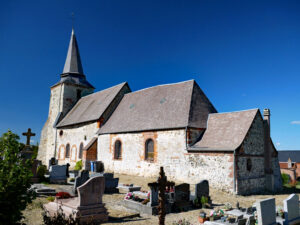A short history of the Thiérache
To understand why there are that many fortified churches in this region, it is essential to have a look at its history
The Thiérache region was characterised by invasions and migrations from the High Middle Ages to the end of the Renaissance. The region, located in the north-east of the present-day department of Aisne, was the scene of conflicts between the kingdoms of Neustria and Austrasia, particularly in the 6th and 7th centuries. In the 10th century, the Thiérache once again fell victim to the collapse of the Carolingian Empire. After a period of relative peace and prosperity, the Hundred Years’ War saw a return to the plundering and devastation of the abbeys and parish churches, which bled the population and economy of Thiérache dry.
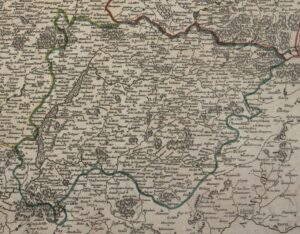
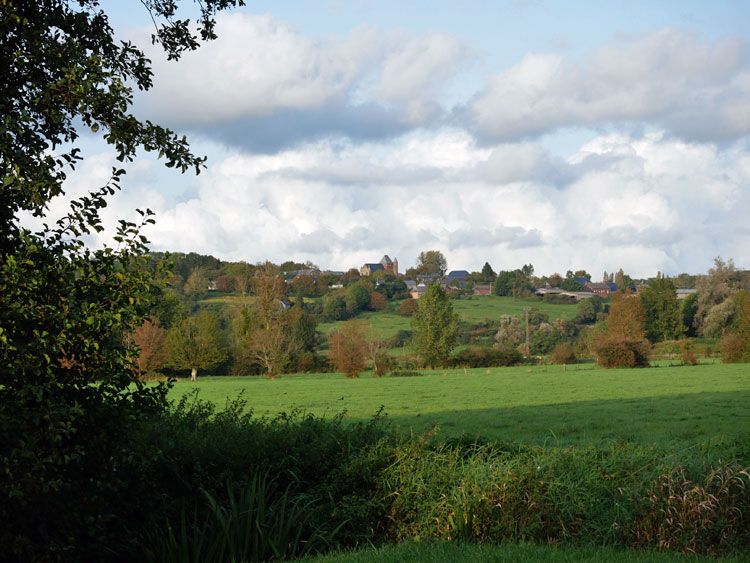
From 843 and the Treaty of Verdun, which divided Charlemagne’s empire, to 1659 and the Treaty of the Pyrenees, which ushered in absolute monarchy, the Thiérache remained the fundamental historical border between France and Hainaut, i.e. the obligatory passage point on the invasion route that paved the way to Paris between the Sambre and the Meuse. The Thiérache is a land of battles and invasions, but also a land of faith and churches. At the beginning of the 12th century, the second period of evangelisation, monasticism took off in the region with the foundation of the monasteries of Boheries, Bucilly, Clairfontaine, Fesmy, Foigny, Saint-Michel, Thenailles and Val-Saint-Pierre. Most of the churches were already built at this time. Later, in the early modern period, they became the object of fortification campaigns.
There are 83 fortified churches in the Thiérache, representing a unique heritage, the result of religious architecture that combines the need for military defence. They form an identity-forming and original architectural corpus of this region. Unlike the old fortified churches in the south of France, which were built in one piece by experienced architects, the fortified churches in the Thiérache were gradually built by the local communities alone, who were responsible for their management. A distinction must therefore be made between the specifically religious part of the church, i.e. the choir and the nave, which date from the 12th to 14th centuries, and the defensive part of the buildings, which was largely built in the 16th to 17th centuries.


The façade of the church of Wimy is a real fortress, consisting of a square tower with a gabled roof flanked by two massive round towers with a diameter of five metres, all made of brick, except for the sandstone base. Most of the churches were fitted with embrasures to provide the defender with a covered shooting range. At the base of the walls of the nave, transept or choir, these embrasures are at man height and usually have a narrow, high slit that is widened at the base to facilitate the insertion and subsequent aiming of an arquebus-type firearm. This fortification dates from the late 16th or early 17th century. Contrary to popular belief, most of the church fortifications in the Thiérache do not date from the Hundred Years’ War, with the exception of the church of Chaourse, which was fortified as early as 1370.
Jean-Paul Meuret, in his work on which we are based here, proposes to divide this extensive fortification movement, which was initiated by rural communities, into five phases. The first fortification campaign from 1521 to 1559 was characterised by open warfare between Emperor Charles V and King Francis I, who was succeeded by his son Henry II in 1547. The passage of the armies through the Thiérache and the attacks of the troops decimated the rural population. Following the example of fortified places such as Guise, La Capelle or Le Catelet, the population, sometimes with the help of the clergy or secular lords, endeavoured to create places of refuge in churches or existing community buildings. The fortified churches of La Bouteille and Montcornet (1546-1547) date from this period.

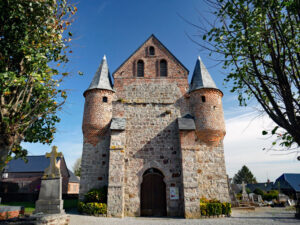
The second fortification campaign from 1570 to 1598 took place after the ratification of the Peace of Cateau-Cambrésis (1559), when from 1570 onwards there was increased conflict between Ligists and Calvinists in the countryside. The troops of both parties, who occupied towns and castles, regularly carried out looting, ransom extortion and other reprisals. New fortifications were built in Agnicourt-et-Séchelles, Esquéhéries, Sorbais, Landouzy-la-Cour, Englancourt and Behaines.
The third phase of fortifications or repairs, from 1598 to 1635, took place in a context that was relatively pacified by the policy of pacification of the kingdom pursued by Henri IV at the end of his reign. In 1607, the Archdeacon of Thiérache, Nicolas Desains, gave the Bailiwick of Vermandois a list of the looted churches “to organise their restoration”. The churches concerned were those of Landouzy-la-Ville (1600), La Bouteille (1601), Origny-en-Thiérache (1607), Montcornet (1609-1612) and Wimy. The aim was to protect themselves from the Spanish couriers who kept crossing the border. Between 1631 and 1634, the churches of Autreppes, Lerzy, Fontaine, Marly and Saint-Algis were also fortified.

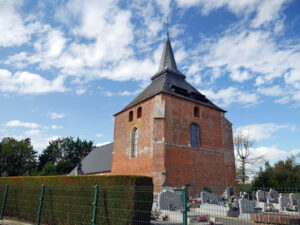
The declaration of war against Spain on 19 May 1635 marked the fourth phase, which ended in 1659. The Thiérache was now relentlessly devastated by military campaigns, irregular troop crossings, Spanish invasions, sieges, marches and counter-marches. The beginning of the Fronde in 1648 brought with it a series of devastations. The church was the only place of refuge for the poor farmers and the inhabitants, who were at the mercy of the marauders. The Rogny keep was built in 1643 and the Cilly refuge tower was erected in 1644. The Treaty of the Pyrenees, signed in 1659, ended the Forty Years’ War with the Spanish enemy.
As the absolute monarchy moved the borders of the kingdom further north, the Thiérache was temporarily protected from military operations. Between 1670 and 1690, the rural parishes carried out the final phase of repairs to their churches, such as in Esquéhéries (1670), Laigny (1673), Saint-Pierre (1676), Faty (1676), Malzy (1680) and Saint-Algis (1685). The last fortifications of the churches of Froidestrées (1696) and Archon (1699) were only carried out towards the end of the century. The uniqueness of these fortified churches in the Thiérache is now a fully protected and recognised heritage site in the Picardy region.
